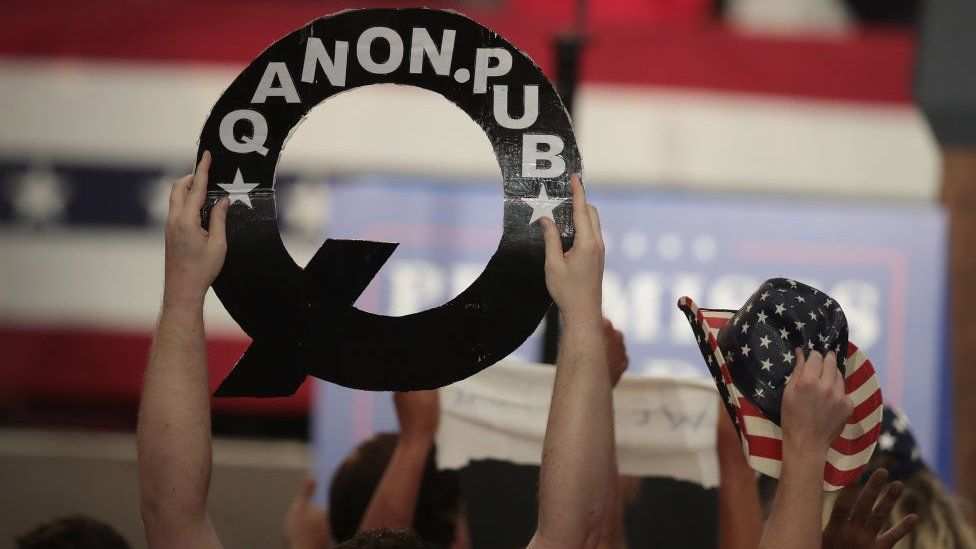“Is Paul Furber really behind QAnon?” the South African tech community has been asking itself again this week.
The world was shocked when the Johannesburg tech journalist was identified in September 2020 in the Replay All podcast as being integral to the origins of the QAnon conspiracy theory.
On Sunday, the New York Times answered this question: “Two teams of forensic linguists say their analysis of the Q texts shows that Furber, one of the first online commentators to call attention to the earliest messages, actually played the lead role in writing them.”
The newspaper concluded that Furber was one of two possible writers of the “Q drops,” as they are called. The other person is Ron Watkins – who is now running Congress and on whose website Q messages appeared in 2018. He told the paper: “I am not Q.”
The New York Times article shows how “linguistic detectives find fingerprints” that point to Furber as the original Q.
Well known in journalism and tech industry circles, Furber wrote for tech website ITweb and its Brainstorm magazine for years, as well as teaching himself a range of tech skills. He accompanied the police on Anton Pillar raids, where he helped police retrieve data off the confiscated computers, he told me.
At press conferences and industry events, he always seemed like a regular, normal guy who loved his children. He was occasionally wacky. Like the time he showed up with a Mohican haircut, with the sides of his head shaved – long before David Beckham made it hip. It didn’t help that he rode a motorbike and that day arrived in full black leather riding gear.
I’ve been trying to remember the last time I saw him – which was in 2010 or 2011 when a bunch of us got together for Mandela Day to do 67 minutes of digital community work. Furber and two or three others edited Wikipedia pages, I think.
He seems an unlikely booster for the QAnon drivel, but also equally unlikely to be Q, compared to who he seemed a decade ago.
The fundamental belief espoused by QAnon is that the US government is secretly controlled by Satan-worshiping paedophiles, and which far-right nutters have also bizarrely claimed are Democrats.
Many of the rioters who stormed the US Capitol on 6 January last year in a failed “insurrection” to stop Joe Biden from being certified as president were open QAnon supporters. The so-called QAnon shaman Jake Angeli – who roamed the Senate building in a fur hat with horns and left a note reading “It’s Only A Matter Of Time. Justice Is Coming!” – was sentenced to 41 months in jail last November.
Other QAnon supporters have also turned to violence, including one man who staged a 2018 protest on the Hoover Dam with assault rifles demanding that the US government investigate the “cabal” which runs the alleged global Satanic child-trafficking ring.
Claude-Alain Roten and Lionel Pousaz of Swiss startup OrphAnalytics and French computational linguists Florian Cafiero and Jean-Baptiste Camps did separate analyses using stylometry, a mathematical system that produces results that are “measurable, consistent, and replicable,” the NYT reported.
A similar kind of approach has helped solve other problems, such as the FBI identifying Ted Kaczynski as the Unabomber and uncovering Harry Potter author JK Rowling’s 2013 detective novel, published under a pen name but written by her.
“I’d buy it,” Duquesne University’s Patrick Juola told the newspaper, having identified Rowling as the real author of the detective novel Cuckoo Calling, “what’s really powerful is the fact that both of the two independent analyses showed the same overall pattern.”
Furber’s role in the QAnon saga is linked to the first appearance of messages from Q on the message board website 4Chan. Furber was the administrator of a particular board where this shadowy character began “dropping” the cryptic messages in 2017 – and seemed to be in some kind of trusted relationship with him.
Fredrick Brennan who founded the message board 8Chan, told Reply All in 2020: “I think Furber is most likely Q. The original Q.”
Read by a regular, rational person, QAnon reads like is a modern-day Nostradamus for stupid people. It seems to be meaningful and warn about specific things, but they are so vague as to be easily explained away if they don’t occur.
More people believe in QAnon in America than some major religions, a May 2021 survey by the Public Religion Research Institute and the Interfaith Youth Core found, with 15% of Americans saying they truly believed in QAnon. Meanwhile, two QAnon-supporting Republicans were elected to Congress in 2020, Georgia’s Marjorie Taylor Greene and Colorado’s Lauren Boebert.
As the New York Times concluded of the QAnon movement: “Paul Furber was its first apostle.”
This article first appeared in Financial Mail




